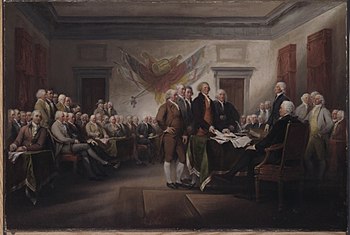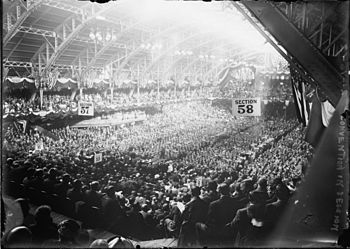
I’m sure every generation agonizingly reappraises what we mean by the word “America,” whether or not our present is worthy of our history, how well or poorly we’ve maintained the society our founding fathers envisioned. The 4th of July — “Independence Day” to commemorate the date on the 13 colonies’ Declaration of Independence — seems like an appropriate occasion for such reflection.
By way of not being a Debbie Downer, let’s look at some areas in which we’ve actually improved on 1776: These days a woman can own property and vote, an American of African descent is no longer someone ELSE’s property (or 3/5th of a person for purposes of stuffing Congress with “representation” for his or her owners), and we’re much less likely on average to be killed by bears, smallpox or angry Native Americans. All to the good, I’d say.
But looking over the list of colonial grievances levied against King George III in the Declaration, I think it’s fair to say that we suffer most of them today — on steroids — courtesy of Washington, DC.
“[E]rected a multitude of New Offices, and sent hither swarms of Officers to harrass our people, and eat out their substance” is my favorite complaint (in terms of creative phrasing) against Britain in the Declaration. These days, it sounds like the federal government’s job description.
“Taxation without representation” (not so concisely worded in the Declaration) was a major colonial complaint. How’s the US doing versus the mother country these days?
Well, the US boasts 537 elected federal officeholders (435 US Representatives, 100 US Senators, a president and a vice-president) to “represent” a population of about 320 million citizens, or about one “representative” per 600,000 citizens.
The United Kingdom’s House of Commons alone, on the other hand, consists of 650 members of parliament “representing” only 65 million citizens, or one representative per 100,000. Looks like they’ve got us beat “representation”-wise.
Adding insult to injury, American “representatives” spend their work days finding new and creative ways to tax the rest of us to death while simultaneously depriving us of the rights we allegedly rebelled to secure way back when.
America, it seems to me, has fallen far short of what she could have been had we actually secured our rights to life, liberty and the pursuit of happiness and jealously guarded them to this day. Between the fireworks and grilling out, take a moment to shed a tear with me for what might have been and isn’t.
Thomas L. Knapp (Twitter: @thomaslknapp) is director and senior news analyst at the William Lloyd Garrison Center for Libertarian Advocacy Journalism (thegarrisoncenter.org). He lives and works in north central Florida.
PUBLICATION/CITATION HISTORY
- “America: Mourn … er, Born … on the 4th of July,” by Thomas L. Knapp, OpEdNews, 07/02/16
- “America: Mourn … er, Born … on the 4th of July,” by Thomas L. Knapp, Ventura County, California Citizens Journal, 07/02/16


